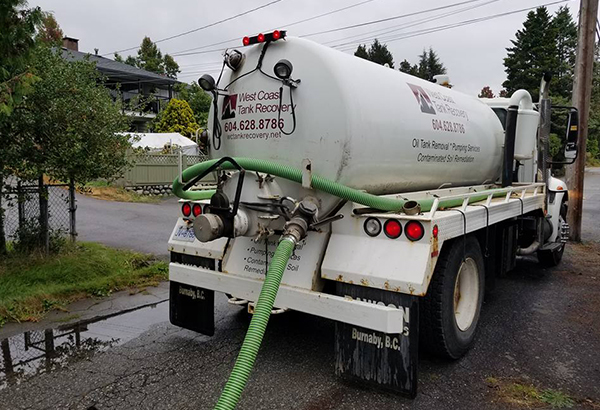 Fully Licensed and Insured
Fully Licensed and Insured Request an Oil Tank Scan
Request an Oil Tank Scan Request a Free Estimate
Request a Free Estimate

Whether you are purchasing an older home or renovating your existing home, determining if your residence has an abandoned oil tank on the property is essential to the safety and value of your home. With the advent of new heating systems, oil heating has fallen out of favour along with the underground tanks that supplied these systems. Unfortunately, decommissioned oil tanks pose a significant risk to your soil, groundwater, and even the air around your home. Without proper planning and professional help, finding and removing these tanks can lead to costly mistakes. Here’s how GPR Tank Locating can help you find your oil tank and avoid dangerous and expensive mistakes.
Although abandoned oil tanks are out of sight, they should not be left out of mind. As the tank’s metal erodes from contact with moisture and pressure from the surrounding soil, it can pose several risks to the water table, soil, and structure of the property area in which it is located. Oil tanks can collapse inward if the metal walls are eroded. This can cause soil subsidence (a situation in which the surface of soil sinks due to the shifting of underground material). Newly sunken areas of your property should be addressed right away, especially if they are close to the foundation of your home. Another risk of leaving a decommissioned tank underground is the potential for groundwater contamination. While built strong, these tanks are not indestructible. Over time, erosion can cause holes in the tank which can cause seepage of any leftover oil and sludge from inside the tank. The erosion of the metal itself can also become a problem for the ecosystem of the surrounding area.
We encourage you to reach out to our professionals here at WC Tank Recovery so we can help you determine whether you are dealing with an abandoned oil tank collapse. With our GPR tank locating technology we can locate the collapsed oil tank and plan the digging and removal process with precision. That way, you can spare yourself the costly ramifications of digging in the wrong spot and into a chemical and structural mess.
When it comes to locating and removing oil tanks from underground, it’s important to determine not just the location of the tank but also the location of other underground structures that could be damaged by blind digging. Fortunately, ground-penetrating radar technology can distinguish various materials from one another making for a more precise picture of what lies beneath the surface of your property. By sending signals into the ground and calculating the rate at which the signals are bounced back, the GPR tank locating equipment and accompanying software can determine what sort of material is underground. Materials relay signals at different speeds. Our expertly trained contractors can use this information to map out underground structures such as concrete, PVC, rebar, and even subsurface voids and cracks. By obtaining an accurate layout of the underground layers of your property, you can avoid hitting any crucial infrastructure while digging and the costs of repairing or replacing them.
The Discovery of an abandoned oil tank on your property can feel a little overwhelming at first. As much as you’d like to simply ignore it, you know the environmental and practical cost of doing so is too high. Reach out to West Coast Tank Recovery today and find out how our GPR tank locating can help you avoid the growing risks and worry of leaving a decommissioned oil tank in the ground.